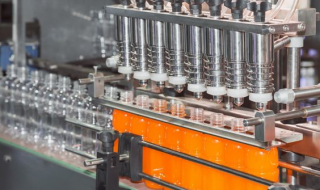With the adoption rate at 67% in 2021, Kubernetes faces continued growth across edge computing, machine learning, and data analytics workloads.
Contents
A leading container orchestrator
According to recent research by the Cloud Native Computing Foundation (CNCF), Kubernetes faced uninterrupted growth in 2021—with a 67% increase in use cases since 2020. As such, a report by D2Q1 cites that an average company surveyed runs 53% of its production workloads on Kubernetes, indicating a rise from 42% as of 2020.
Industry giants are at the forefront of Kubernetes adoption. For instance, Airbnb started its digital transformation back in 2017 by migrating to Kubernetes, enabling continuous delivery at scale in response to increasing loads. So far, the company has reached 125,000+ production deployments per year with more than 50% of its services running on 7,000+ nodes and 36 Kubernetes clusters.
While containers have changed the software development life cycle, Kubernetes brings about automation and flexibility at scale. This article explores the most popular scenarios of Kubernetes adoption in 2021–2022.
Major use cases by domain
Kubernetes is being widely implemented across various domains—according to CNCF, edge computing tops the list. For instance, Osaka University used Kubernetes coupled with machine learning to enable efficient edge computing, cutting down on IT resource utilization by 13%.
The CNCF report cites the most common implementation scenarios and trends:
- edge computing (63%)
- quantum computing (59%)
- haptic feedback technology (56%)
- DNA computing (56%)
- 5G networking (54%)
- blockchain (52%)
- hearable device development (51%)
- brain/body computer interface design (49%),
- self-driving cars (46%)
- computer vision (45%)
- biometrics and ID verification (44%)
- robotics (42%)
Apart from a growing number of domains, Kubernetes adoption is also gaining popularity among particular workloads and systems.
Major types of workloads and systems

In 2021, Red Hat also surveyed the industry leaders regarding the enterprise-grade workloads and systems deployed with Kubernetes.
The top workloads, according to the study, are:
- databases/data cache solutions (76%)
- machine learning (65%)
- web servers (59%)
- logging and monitoring tools (58)
- data analytics/cleansing/ingestion solutions (57)
- programming languages and frameworks (48%)
- app servers (45%)
- message brokers (25%)
Another report by D2IQ provided similar results, supporting an assumption that Kubernetes may become a preferred platform to run machine learning workloads with the implementation rate at 43%. Recently, Shell relied on containerization and Kubernetes to reduce engineering effort on building machine learning models. Now, the company efficiently builds 10,000 models in less than 4 hours instead of weeks.
With growing Kubernetes adoption in 2022, many organizations may still face challenges along the journey. The most frequent issues include the lack of resources, ineffective scaling, as well as inability to be up-to-date with the advancements in the technology stack. In addition, moving on to production involves certain challenges around security, troubleshooting, and infrastructure reliability.



